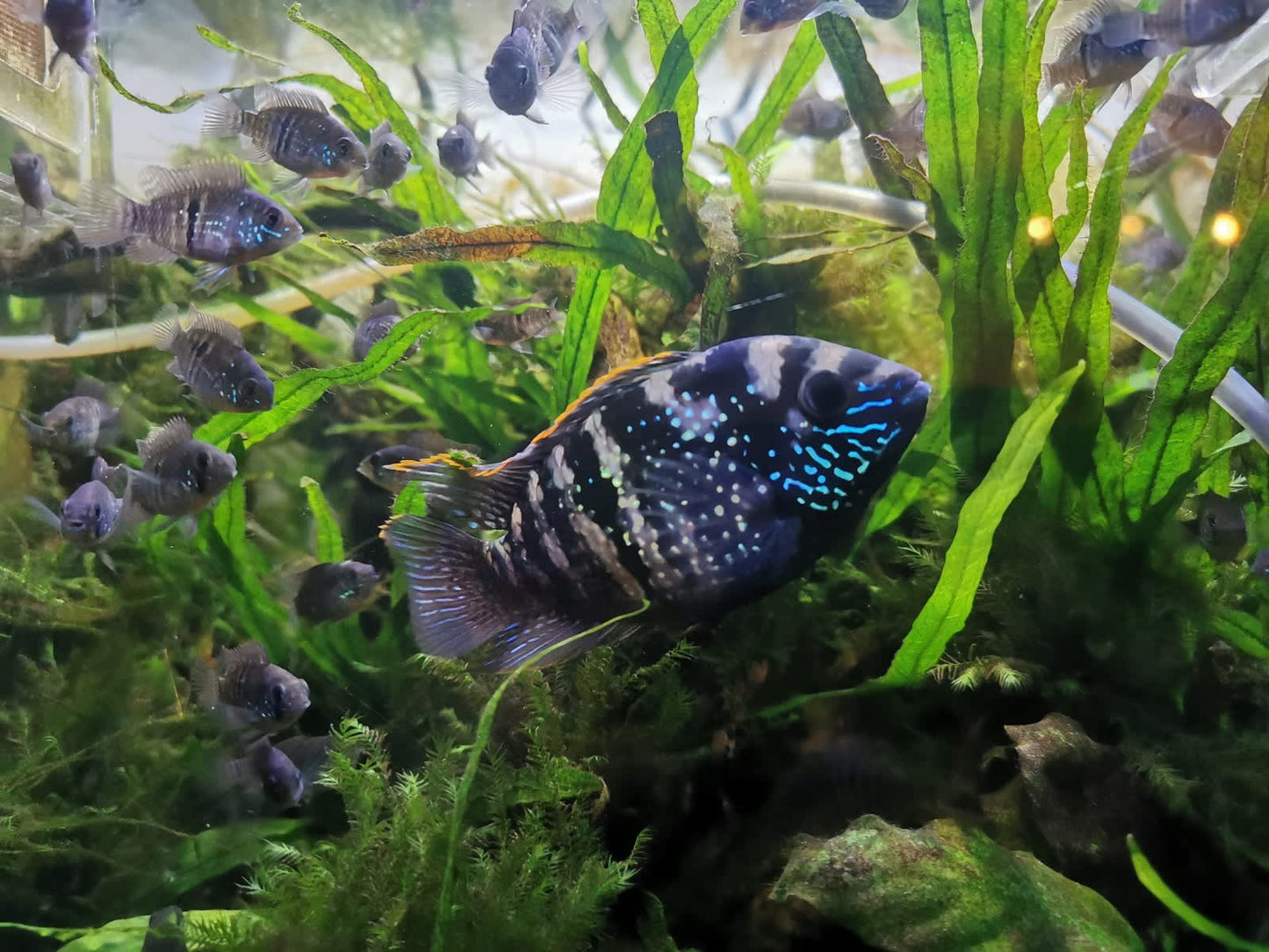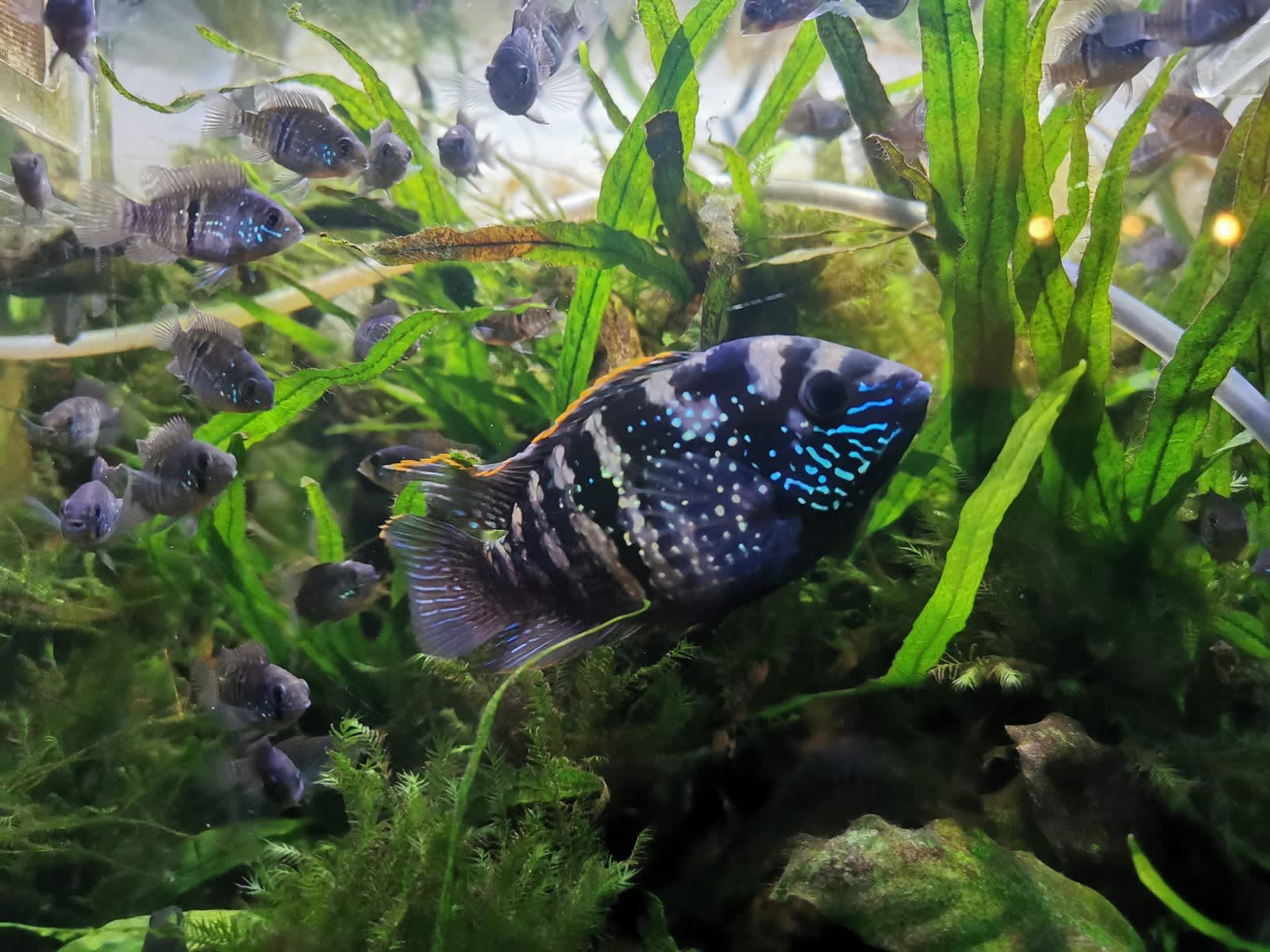Cichlid - Blue Acara
Cichlid - Blue Acara
Couldn't load pickup availability
*Picture is of mature individual
The Blue Acara Aequidens pulcher has been a cichlid of choice for many years for the South American cichlid aquarium. Its species term pulcher means "beautiful", and true to its name it is a beautiful medium sized fish cichlid. Its color is mostly a steel blue-gray, but it is distinguished from other Acara species by a broader forehead. It can reach up to about 8 inches (20 cm) in length, but it will start to breed at a much smaller size of only 4 inches.
This is a hardy species that makes an excellent choice for the beginning cichlid keeper. They are moderately easy to care for as long as the water quality is maintained and they are provided a quality diet. They are a ready feeder and if bred they become excellent parents. They spawn easily and take very good care of their fry.
This cichlid is a bit more courteous than the others of its genus. A peaceful community cichlid, it can be kept with other similar sized South American cichlids, catfish, or plecostomus. Though it is a fairly peaceful member of the Cichlid family, it is apt to bully smaller fish. It should be kept with the same size or larger fish.
The Blue Acara is generally peaceful even with its own kind. If more than one is kept, they will form pairs. They will also usually not bother any fish that stays away from its territory, except when it is breeding it may tend to become more aggressive. They will breed every two weeks on a regular basis if the fry are removed shortly after hatching. However they are excellent parents and will not harm the fry even if left in the aquarium.
They are most comfortable with a tank bottom of fine sand and plenty of hiding places among rocks and wood. Plants are appreciated, but Blue Acara love to dig and can uproot them. Hardy plants such as Sagittaria and Vallisneria are best, and should be potted to protect the roots. They need frequent water changes as their excretions will cloud the water and promote disease.
The Blue Acara tends to be confused with its very similar looking relative, the Green Terror Aequidens rivulatus. For some time the Green Terror was actually known as the A. pulcher, but it is now recognized as an independent species. The Blue Acara is slightly smaller and not as aggressive as the Green Terror, nor does it develop as large a hump on its head when mature.
Share

